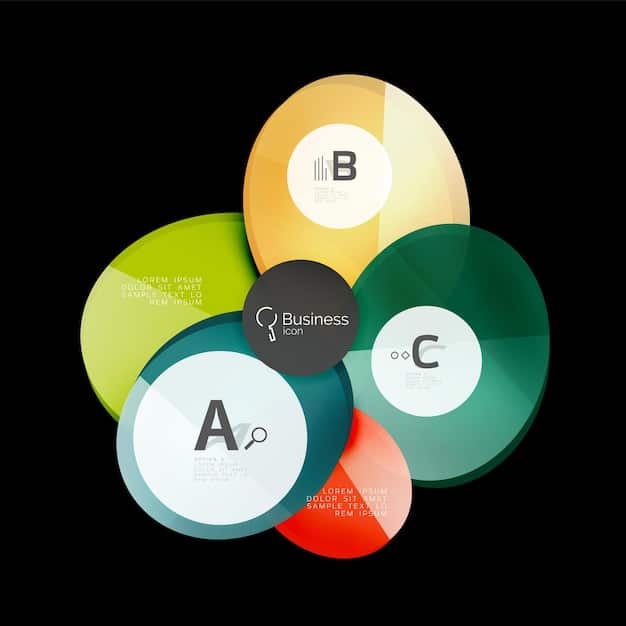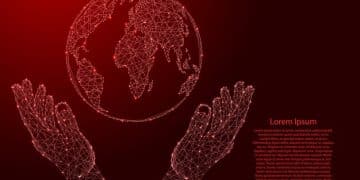Adaptability Quotient (AQ): Why It Matters More Than IQ in the Modern Workplace

Adaptability Quotient (AQ) is increasingly recognized as a critical capability in the modern workplace, enabling individuals and organizations to navigate rapid change and complexity more effectively than traditional measures of intelligence (IQ).
In a world characterized by unprecedented technological advancements, shifting economic landscapes, and dynamic global challenges, the traditional metrics of success are undergoing a profound re-evaluation. For decades, Intelligence Quotient (IQ) stood as the gold standard for measuring cognitive ability and predicting professional achievement. However, as industries transform at an accelerated pace, a new metric, the Adaptability Quotient (AQ): Why It Matters More Than IQ in the Modern Workplace, is emerging as the paramount skill for navigating an uncertain future. This shift recognizes that static knowledge is easily outdated, and the ability to learn, unlearn, and relearn quickly is the true differentiator.
The Shifting Sands of the Modern Workplace
The concept of a stable, predictable career path has largely become a relic of the past. Today’s professional landscape is defined by continuous disruption, driven by forces like artificial intelligence, automation, and globalization. This relentless pace of change renders static expertise less valuable, highlighting the need for dynamic thinking.
The traditional pillars of professional success, often anchored in IQ and specialized knowledge, are showing cracks under the pressure of this new reality. While foundational knowledge remains important, the half-life of skills is shrinking dramatically. What was considered cutting-edge yesterday can become obsolete tomorrow. This phenomenon underscores a fundamental shift in what employers value most in their workforce.
The Era of Constant Disruption
Technological advancements, particularly in AI and automation, are transforming job roles and creating entirely new ones. This means that individuals must not only master new tools but also understand how to integrate them into evolving workflows. The rise of phenomena like the gig economy further exemplifies this need for flexibility, as professionals are increasingly responsible for managing their own career trajectories.
- Technological breakthroughs (AI, automation) reshape industries.
- Economic shifts demand flexible skill sets.
- Global events introduce unforeseen challenges and opportunities.
Beyond Traditional Intelligence: Why IQ Alone Isn’t Enough
IQ primarily measures cognitive abilities like logical reasoning, analytical thinking, and problem-solving based on existing knowledge. While certainly valuable, particularly in predictable environments, it doesn’t fully account for an individual’s capacity to thrive in ambiguity or unexpected scenarios. The world now requires more than just smarts; it demands fluidity.
The limitations of relying solely on IQ become apparent when faced with unprecedented challenges. A high IQ may help in solving a known problem efficiently, but it offers less guidance when the problem itself is undefined or constantly changing. This is where AQ steps in, providing a framework for thriving amidst chaos.
- IQ measures static cognitive abilities.
- Modern challenges are often unstructured and novel.
- Success increasingly depends on navigating the unknown.
Ultimately, the modern workplace favors those who can not only solve problems but also redefine them, innovate solutions on the fly, and pivot strategies in response to new information. This critical aptitude is precisely what Adaptability Quotient encapsulates.
Defining Adaptability Quotient (AQ)
At its core, Adaptability Quotient (AQ) represents an individual’s capacity to adjust, learn from, and thrive in dynamic and ambiguous environments. It goes beyond mere flexibility; it implies a proactive engagement with change, viewing it as an opportunity rather than a threat.
Unlike IQ, which is relatively stable throughout adulthood, AQ is a skill that can be developed and enhanced over time. It encompasses a range of cognitive and emotional attributes that enable individuals to process new information, reframe challenges, and generate novel solutions when existing frameworks no longer apply.
The Core Components of High AQ
High AQ is not a singular trait but a constellation of interconnected skills and mindsets. These components work in synergy to allow an individual to pivot effectively when circumstances demand it. They include cognitive flexibility, emotional resilience, curiosity, and a growth mindset.
- Cognitive Flexibility: The ability to switch between different ways of thinking and problem-solving. It involves letting go of old assumptions and embracing new perspectives.
- Emotional Resilience: The capacity to bounce back from setbacks, manage stress, and maintain composure amidst uncertainty. This is crucial for sustained performance in volatile environments.
- Curiosity: An intrinsic drive to explore, question, and learn new things. Curious individuals are naturally inclined to seek out new information and consider diverse viewpoints.
- Growth Mindset: The belief that one’s abilities and intelligence can be developed through dedication and hard work. This contrasts with a fixed mindset, which assumes abilities are static.
Together, these elements create a powerful toolkit for navigating complex professional landscapes. An individual with high AQ isn’t just surviving change; they are actively shaping their response to it and evolving as a result.
AQ Versus IQ and EQ: A Holistic View
While IQ (Intelligence Quotient) measures cognitive ability and EQ (Emotional Quotient) measures emotional intelligence, AQ adds another crucial dimension – the capacity for continuous learning and adaptation. None of these quotients are mutually exclusive; rather, they are complementary.
A high IQ might provide the raw processing power, and a high EQ might facilitate collaboration and understanding of human dynamics. However, without a strong AQ, these strengths can be undermined by rapid shifts. An individual might be brilliant and empathetic but struggle if they cannot adjust their strategies or learn new ways of working. AQ acts as the accelerator, ensuring that intellectual and emotional capacities can be effectively deployed in ever-changing scenarios.

Measuring and Developing Your AQ
Unlike IQ, which is often assessed through standardized tests, AQ is more fluid and can be cultivated through deliberate practice and self-awareness. While formal assessments are emerging, many aspects of AQ are best understood through behavioral observation and self-reflection.
The journey to enhancing one’s AQ begins with recognizing its importance and committing to a mindset of continuous learning and evolution. It involves intentionally stepping outside one’s comfort zone and embracing challenges as opportunities for growth.
Self-Assessment and Behavioral Indicators
While no single definitive test for AQ exists universally, several behavioral indicators suggest a high level of adaptability. Reflecting on these can provide valuable insights into one’s own AQ. Do you embrace new technologies eagerly or resist them? How do you react when plans change unexpectedly?
- Openness to New Experiences: Actively seeking out novel situations, ideas, and perspectives.
- Comfort with Ambiguity: Remaining calm and productive even when information is incomplete or directions are unclear.
- Problem-Solving Creativity: Approaching challenges with an innovative mindset, willing to challenge conventional wisdom.
- Learning Agility: The speed at which an individual can learn new skills and apply them in different contexts.
- Resilience to Failure: Viewing mistakes as learning opportunities rather than definitive endings.
Observing these behaviors in oneself and others can offer anecdotal evidence of strong AQ. For organizations, fostering a culture that values these traits is paramount.
Strategies for Cultivating a Higher AQ
Developing AQ is a continuous process that involves both intentional practice and a shift in mindset. It’s about moving from a reactive stance to a proactive one in the face of change.
Embrace Lifelong Learning
This goes beyond formal education. It involves perpetually seeking new knowledge, whether through online courses, professional development workshops, reading diverse materials, or simply engaging in curious conversations. The goal is to keep the mind agile and receptive to new information.
Seek Discomfort
Purposefully take on tasks or projects that push you beyond your current skill set. This could involve leading a team in an unfamiliar area, learning a new software, or volunteering for cross-functional initiatives. Discomfort is often a precursor to growth.
Practice Mindfulness and Self-Reflection
Understanding your emotional responses to change is critical. Mindfulness helps in staying present and less reactive, while self-reflection allows you to analyze your reactions and identify areas for improvement. This internal awareness is a cornerstone of emotional resilience.
Build Diverse Networks
Engage with people from different backgrounds, industries, and perspectives. This broadens your worldview, exposes you to new ideas, and provides a wider range of solutions to potential problems. Diverse networks are incubators for adaptable thinking.
By consistently applying these strategies, individuals can significantly boost their AQ, preparing themselves for a future where change is the only constant.
AQ in Practice: Real-World Business Impacts
The theoretical concept of AQ gains significant traction when examined through its tangible impacts on business performance and individual career trajectories. Organizations and professionals who prioritize adaptability demonstrate measurable advantages in navigating market shifts, fostering innovation, and maintaining competitive relevance.
In a global economy defined by volatility, uncertainty, complexity, and ambiguity (VUCA), the ability to rapidly course-correct and innovate becomes a decisive factor in survival and success. AQ is not merely a soft skill; it’s a strategic imperative.
Organizational Agility and Resilience
Companies with a high collective AQ are inherently more agile. They can pivot their strategies, recalibrate their offerings, and reallocate resources much faster than their less adaptable counterparts. This agility translates directly into market responsiveness.
- Faster market response: Companies can quickly adjust to new consumer demands or competitive pressures.
- Enhanced crisis management: Adaptable organizations are better equipped to absorb shocks and recover from unforeseen disruptions, such as economic downturns or supply chain interruptions.
- Sustainable innovation: An adaptable culture fosters an environment where experimentation is encouraged, leading to continuous product and process innovation.
For example, companies that rapidly shifted to remote work models during global crises, or those that pivoted their production lines to meet urgent public health needs, demonstrated high organizational AQ. Their success wasn’t just about having the right technology but about the underlying cultural ability to embrace profound change.
Career Longevity and Progression
For individuals, a high AQ is increasingly seen as a guarantor of career longevity and upward mobility. In a world where specific job descriptions evolve or disappear, the adaptable professional remains highly employable.
They are the ones who can transition seamlessly between roles, learn new software suite requirements, or take on unexpected leadership responsibilities. AQ empowers individuals to see career changes not as setbacks but as opportunities to acquire new skills and expand their professional versatility.
- Increased employability: Recruiters prioritize candidates who can learn quickly and thrive in dynamic settings.
- Smoother career transitions: Adaptable individuals navigate job changes, industry shifts, or role evolutions with greater ease.
- Access to new opportunities: High AQ opens doors to roles that require innovative thinking and comfort with uncertainty, often leading to more senior or strategic positions.
Many successful career professionals often attribute their achievements not just to their initial education or intelligence, but to their consistent ability to adapt to new technologies, market demands, and organizational structures throughout their professional lives.
Building an Adaptable Workforce and Culture
For organizations, cultivating adaptability isn’t just about hiring individuals with high AQ; it’s about embedding adaptability into the very fabric of the company culture. This requires a conscious effort from leadership to redefine norms, encourage new behaviors, and create environments where change is embraced, not feared.
A truly adaptable workforce is one where individuals feel empowered to experiment, learn from failure, and actively contribute to the organization’s evolution. This shift moves beyond traditional training programs into a holistic organizational transformation.
Leadership’s Role in Fostering AQ
Leaders are the primary architects of organizational culture. Their actions, decisions, and communication patterns significantly influence the adaptability of their teams. To cultivate high AQ, leaders must model the behaviors they wish to see.
- Embrace a Growth Mindset: Leaders must demonstrate their own willingness to learn, adapt, and admit when they don’t have all the answers. This vulnerability fosters psychological safety.
- Promote Experimentation and Learning from Failure: Create a “safe to fail” environment where mistakes are viewed as valuable learning opportunities rather than grounds for punishment. Encourage rapid prototyping and iterative improvements.
- Communicate Vision and Context: Clearly articulate the “why” behind changes, helping employees understand the broader strategic context. This transparency reduces anxiety and builds trust.
- Empower Decision-Making: Delegate authority and encourage employees at all levels to take initiative and make decisions relevant to their work. This fosters agency and responsiveness.
A leader who consistently demonstrates adaptability inspires their team to do the same, creating a cascading effect throughout the organization.
Designing for Flexibility: Structures and Processes
Beyond individual behaviors, organizational structures and processes must be designed to facilitate, rather than hinder, adaptability. Rigid hierarchies and bureaucratic procedures are antithetical to rapid change.
Agile Methodologies and Cross-Functional Teams
Implementing agile frameworks (like Scrum or Kanban) can significantly boost organizational adaptability. These methodologies emphasize iterative development, frequent feedback, and cross-functional collaboration, allowing teams to deliver value quickly and adjust course as needed.
Continuous Training and Upskilling Initiatives
Invest in ongoing learning and development programs that focus not just on specific technical skills but also on meta-skills like critical thinking, complex problem-solving, and emotional intelligence. Provide resources and time for employees to continuously upskill and reskill.
Flexible Work Arrangements
Offering flexible work hours, remote work options, or project-based assignments helps employees manage work-life balance and equips them with the autonomy often required for adaptable thinking. Such arrangements also broaden the talent pool, allowing access to diverse perspectives.
By implementing these structural and cultural adjustments, organizations can transform themselves into highly adaptable entities, ready to face future disruptions head-on and emerge stronger.
The Future of Work: Why AQ is the New Frontier
As we gaze into the future of work, it becomes clear that the traditional parameters are increasingly insufficient. The speed of technological evolution, the unpredictability of global events, and the evolving nature of human-machine collaboration demand a workforce characterized by supreme adaptability. In this context, AQ stands not just as a preference but as a fundamental requirement for individual and collective success.
The “future of work” isn’t a distant phenomenon; it’s already here, characterized by continuous learning, rapid prototyping, and a comfort with ambiguity. Those who can embrace this new paradigm, driven by a high AQ, will be the true shapers of tomorrow’s economy.
Navigating the AI Revolution with AQ
Artificial intelligence is arguably the most transformative technology of our time, poised to redefine nearly every job function. While AI excels at routine tasks, data processing, and predictive analytics, it largely lacks the human capacity for nuanced judgment, empathy, ethical reasoning, and, critically, adaptability in truly novel situations.
- Human-AI Collaboration: The future workforce will operate in close partnership with AI tools. AQ enables individuals to quickly learn how to leverage these tools, understand their limitations, and adapt their workflows to optimize this collaboration.
- Focus on Uniquely Human Skills: As AI automates predictable tasks, the demand for uniquely human attributes like creativity, critical thinking in complex unstructured environments, and interpersonal skills will intensify. AQ underpins the development and application of these higher-order human capabilities.
- Job Redefinition, Not Just Elimination: Many roles won’t disappear but will evolve. Professionals with high AQ will be the ones who can adapt to these redefined roles, acquiring new skills and responsibilities to complement AI capabilities.
This means that rather than competing with AI, successful professionals will need to collaborate with it, and AQ is the essential skill for making that collaboration effective and pioneering new ways of working.
Preparing the Next Generation: Education for AQ
To truly prepare for this future, educational systems must shift their focus from rote memorization and static knowledge transfer to fostering the core components of AQ. This means prioritizing skills development alongside content delivery.
Emphasizing Project-Based Learning and Problem-Solving
Curricula should incorporate real-world, open-ended problems that require creative solutions and collaborative effort. This simulates the ambiguous environments professionals will face, teaching them to adapt their approach. Experiential learning is key here.
Cultivating Emotional Intelligence and Resilience
Education needs to move beyond purely academic metrics to include the development of emotional regulation, empathy, and resilience. Programs that teach coping mechanisms for stress, conflict resolution, and self-awareness are vital.
Promoting a Growth Mindset from an Early Age
Instilling the belief that intelligence and abilities can be developed through effort is perhaps the most fundamental building block of AQ. Educators should focus on praising effort and strategies over inherent talent, encouraging a love for challenging oneself.
By integrating these principles, education can nurture not just intelligent minds, but adaptable ones, ready to thrive in the dynamic world awaiting them. Ultimately, the future of work belongs to those who are not just smart, but supremely agile and ready to embrace constant evolution.
| Key Point | Brief Description |
|---|---|
| 🧠 AQ vs. IQ | AQ measures ability to adapt and thrive in change, while IQ measures cognitive intelligence. AQ is more critical for modern workplace success. |
| 🚀 Components of AQ | Includes cognitive flexibility, emotional resilience, curiosity, and a formidable growth mindset. |
| 📈 Cultivating AQ | Developed through lifelong learning, seeking discomfort, self-reflection, and building diverse networks. It’s an ongoing process. |
| 🔮 Future Relevance | AQ is crucial for navigating AI integration, ensuring career longevity, and fostering organizational agility in the constantly evolving job market. |
Frequently Asked Questions about Adaptability Quotient (AQ)
Adaptability Quotient (AQ) is a measure of an individual’s capacity to adjust, learn from, and thrive in rapidly changing and uncertain environments. It encompasses cognitive flexibility, emotional resilience, willingness to learn, and comfort with ambiguity, making it essential for navigating modern challenges in the workplace.
The modern workplace is characterized by constant disruption, driven by technology and global changes. While IQ measures static cognitive abilities, AQ measures the dynamic ability to learn, unlearn, and relearn. This continuous adaptation is crucial for staying relevant and effective when specific knowledge or skills can quickly become obsolete.
Unlike IQ, which is relatively stable throughout adulthood, AQ is a skill set that can be significantly developed and enhanced over time. Strategies include embracing lifelong learning, seeking out new experiences, practicing self-reflection, cultivating a growth mindset, and intentionally stepping outside one’s comfort zone to build resilience.
Organizations with a high collective AQ are more agile and resilient. They can respond faster to market shifts, manage crises more effectively, and foster continuous innovation. A culture that values adaptability empowers employees to contribute to organizational evolution, ensuring long-term competitiveness and survival in dynamic markets.
As AI automates routine tasks, human-AI collaboration becomes paramount. AQ enables individuals to swiftly learn new AI tools, adapt workflows, and focus on uniquely human skills like creativity, critical thinking in unstructured situations, and empathy. It ensures professionals can redefine their roles and remain valuable partners to advanced technologies.
Conclusion
In charting the course for professional excellence, the compass has undoubtedly swung towards Adaptability Quotient. While foundational intelligence and emotional acumen remain invaluable, the relentless pace of change in the modern workplace has elevated AQ to an indispensable attribute. It is the core competence that empowers individuals to navigate uncertainty, embrace continuous learning, and transform challenges into opportunities. For organizations, cultivating a high-AQ culture is not merely a competitive advantage but a strategic imperative for resilience and sustainable growth. The future belongs not to the smartest, but to the most adaptable – those perpetually ready to evolve, innovate, and contribute meaningfully to a world in motion.





